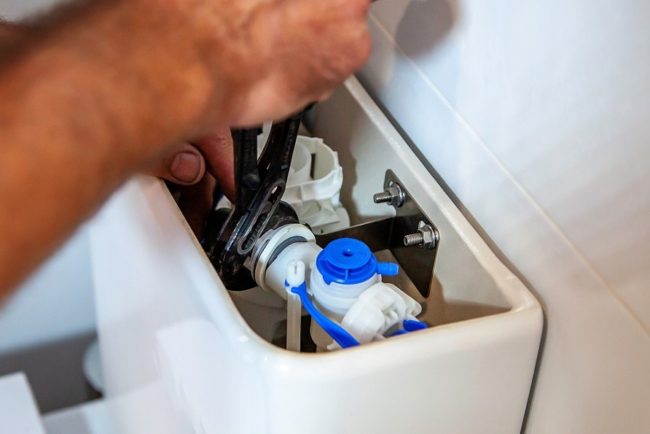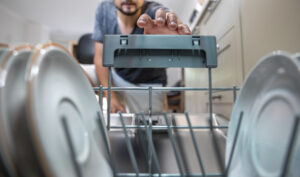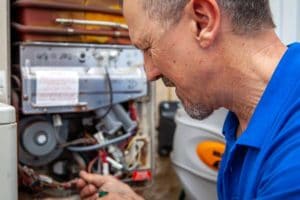No matter whether you’re buying an investment property or your forever home, it’s so important to fully inspect the condition of the plumbing system prior to purchase. Once you’ve signed the contract and taken ownership, any plumbing maintenance issues will become your responsibility.
While it’s ultimately up to the seller to ensure the property is provided to you in top working order, it’s always good to perform your own assessment. That way all issues can be resolved before the property becomes yours and you can assume ownership with full peace of mind.
It’s best to engage a licensed plumber to undertake a thorough inspection of the home, but there are some parts of the property that you can check yourself. You can also search for warning signs and other indications that there may be an impending problem. Here’s what you should look out for and the questions you should ask when examining your new property.
How Old Is The Plumbing?
There may be a lot of new housing developments in Perth, but there are still many older, character homes around. Depending on how old the home is, you may need to arrange for the plumbing system to be completely replaced. The owner isn’t obligated to perform such extensive upgrades, but it could assist you to negotiate down the house price to make up for the cost of arranging the work yourself.
It’s important not to rely on the age of the property alone. Make sure you confirm when the plumbing system was installed. This will give you a better indication of the condition of the plumbing, as well as the type of pipes used.
What Type Of Piping Has Been Used?
Before 1960, most properties in Perth used galvanized steel plumbing systems. With time, this type of piping will corrode and rust, leading to an increased risk of health hazards and emergency plumbing situations. If a property from this era has copper or plastic plumbing pipes, then chances are the plumbing system has already undergone a full replacement.
Copper pipes can last up to 50 years, while plastic plumbing could potentially last for up to a century. While these materials are likely to stand the test of time, you also need to consider the fittings and joints that connect these pipes as well as external factors, such as tree roots, which could impact the plumbing.
The type of piping can provide you with a rough idea of the state of the plumbing, but even if the property is only a few years old, you should still get the pipes looked over by a professional.
What Is The Condition Of The Sewer Line?
The sewer line channels all the waste from the home into the main sewer that’s located under the street in front of the property. Over time, various factors can impact the condition of the sewer lines. Tree roots are naturally drawn to sewer lines and strong roots from older trees can wrap around the pipes, causing them to crack and leak or become blocked. And much like household plumbing, sewer lines can also corrode or become clogged from usage.
Checking the sewer lines is an activity best left to a qualified plumber with access to the latest technology. Nowadays, plumbers can feed cameras into sewer lines to gain an accurate view of the condition of the pipe. The last thing you want is to experience a plumbing emergency the moment you the property becomes yours, and as you can imagine, a sewerage line emergency can be quite unpleasant.
When Was The Hot Water System Installed?
Most hot water systems tend to last around 10 years before they need to be replaced. Be sure to check with the owner when the hot water system was installed so that you can track when the hot water system needs to be upgraded.
While 10 years is the estimated lifespan for the average hot water system, there is no guarantee that the system will last for the full decade. There are ways to check whether a hot water system needs to be replaced or repaired before its expiry date. Some of the tell-tale signs include excessively high utility bills (depending on whether the system is gas or electric), ineffective water heating, dirty water, reduced water pressure and a leaking tank.
Is The Toilet In Good Working Order?
Make sure you look over the toilet as thoroughly as possible. Check for leaks, discolouration and warping at the base of the toilet. The owner should organize any necessary water leak repairs prior to handover. It’s also recommended to test the flush function to ensure there are no blockages or faulty parts in the toilet.
How Well Do The Taps Work?
Most homes will contain multiple taps throughout the bathroom, kitchen, laundry and outdoor areas. It’s a good idea to test every single tap in each room to check the quality of the water and the condition of the associated plumbing. If the water has a slightly brown tinge, there could be rust in the pipes.
Alternatively, if the plumbing makes a hammering or rattling sound, there could be an issue with the connections between the pipes or the water pressure. But if the water makes a gurgling sound as it goes down the plug hole, this suggests a blocked drain from either food scraps or bathroom products.
You should test the water pressure of each tap as well, especially when it comes to the shower head. If the stream of water seems weaker than it should be, there could be a blocked drain, a water leak or a problem with the hot water system.
Is There Any Water Damage?
If there is a water leak in the plumbing, there is likely to be water damage in the home as a result. On top of inspecting wet areas, such as the bathroom, kitchen and toilet, you should also examine the walls and ceiling throughout the home.
By following these easy steps and getting a professional plumber to assist you when needed, you’ll be able to take on your new property with eyes wide open and take appropriate action to resolve any issues.




